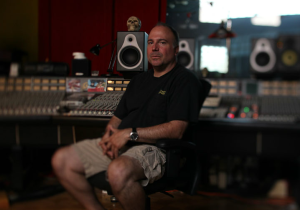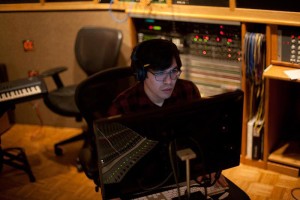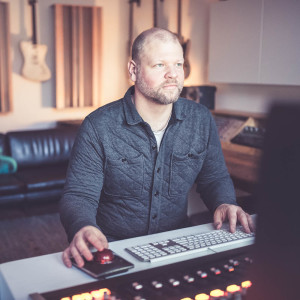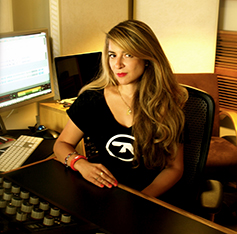EQ Tips From The Pros
To go even deeper on the use of EQ in mixing or mastering, try our full-length courses, Mixing Breakthroughs and Mastering Demystified.
Equalizers are one of the most common tools we use. Although there are “no rules” when it comes to working with audio, some EQ tips have been reiterated so often that many of us take them as gospel. If you’re anything like me, you’re probably guilty of going on “autopilot” and high-passing everything from time to time. How about accidentally cutting an instrument’s tone to shreds, boosting frequencies like a drunk, or not really listening to how something fits in the overall mix? We’ve all done it. Don’t worry, I won’t tell.
With that in mind, I decided to ask a few of the best engineers and producers around today for some real-world insights on how they use EQ to transform and enhance the music they work on day after day.
Garbage In, Garbage Out
First of all, no amount of EQ will make a terrible singer incredible. EQ can enhance a sound, but it can’t do magic. (Even if you’re using the greatest gear on the planet.) So focus on the big picture: An instrument can sound awful soloed but still work wonderfully in the song. Try not to get too stressed about it, and trust your ears.
Cut / Boost
It doesn’t matter what an “EQ chart” you found on the Internet says. Blindly tweaking frequencies will typically do more harm than good. If you’re making a cut or boost, have a reason for it. Will it help the mix?
“I try to cut rather than boost whenever possible,” says Rick Kwan [My Morning Jacket, Bruce Springsteen, Jimi Hendrix]. “One thing that I think [most] people don’t know is that in the Avid EQ III plugin, you can hold down ctrl+shift while you adjust the frequency and it works as a band pass filter for finding problem areas. I use that shortcut all the time!”
It’s also worth remembering that sometimes a static EQ setting won’t work throughout the entire song. Don’t be scared to make different adjustments for each section.
Be Bold

Joe Barresi gives you permission to turn the knob around backwards to get the sound you’re after, when needed.
Making bold moves can be worthwhile. “There’s a reason EQs have a plus and minus 15dB or more setting,” notes Joe Barresi [Queens of the Stone Age, Bad Religion, Chevelle]. “Don’t be afraid to use it.”
Dan Korneff [Pierce the Veil, Crown the Empire, Motionless in White] adds, “When I was first starting out, I had always read that you should never do too much when EQing. Subtle changes at most. And you should always cut first. Get rid of the stuff that you don’t like. It wasn’t until I sat down at the console with one of the truly great mixing engineers (Andy Wallace) that I adopted the exact opposite practices. He was doing some really drastic moves. Up to +15dB boosts all over the place…and it sounded unreal.
“It opened my eyes to the fact that you should never limit yourself. Do whatever you have to do to get the sound you want. Don’t be afraid.
“With that being said, there is a time and place for everything. Don’t boost 20kHz on a bass guitar, and don’t boost 50Hz on a hi-hat track. Those instruments don’t live in that frequency range and you’ll be wasting sonic space with useless energy. I’m a big fan of using HPF and LPF to eliminate unneeded frequencies. You end up leaving so much more space for other tracks to play with.”
Preset Problems
Just because the plugin has a preset that says “guitar” doesn’t mean it’ll sound great on your guitar. Presets can be a decent starting point, but there’s almost always tweaking to be done. You need to trust your ears and not rely on any one company’s proposed EQ curve. And, sure, the UI might look awesome but it’s not about the fancy colors. Close your eyes, hit that bypass button often and make sure you’re actually improving the sound.
Play Nice Together
Some gear just seems to work better for getting certain sounds. Abe Seiferth [Yeasayer, Bear in Heaven, RAC, Susanne Sundfør] points out, “When EQing a track, you don’t have to do everything with one EQ. It can help you stay organized if you use certain EQs for specific tasks. For instance, on a vocal I’ll use Logic’s EQ to notch, a Neve 1083 to color and a Pultec to add clarity and air. The same can be said for kick drums. I like to have a dedicated EQ just for the low end as well as one for body and one for the attack.”
“Learn to match different pieces of gear to get the sound you want and learn what combos work for different musical parts,” suggests James Sáez [Social Distortion, Jerry Lee Lewis, Morgan James, Porno For Pyros, Marcus Miller]. “Save multi-chain setups in your DAW or on your console and refine them over time for a quick starting point.
“It used to be that whatever console you were working on was the EQ and gain structure that defined the sound of your project, but these days flavors in and out of the box abound I find myself combining effects a lot more often and utilizing dynamic, parallel and mid side EQ/compression daily. Technology now makes these elaborate setups much easier to recall so take advantage by building and storing the signal chains that make your ears smile.”
Time and Patience
It’s not about getting things done the fastest. EQing is a delicate process. “It’s always best to make EQ adjustments in rounds – a little bit at a time,” says Andrew Maury [RAC, Penguin Prison, High Highs, Panama Wedding, Ra Ra Riot].
“Let’s say you’re scanning the mix for things to improve. You notice a kick drum is feeling a bit dull…and you go to boost the top end. It’s very easy to become overzealous and fall victim to a snowball effect in the reward center of your brain. Go bold where your instinct says it’s improving the sound, then split the difference! Put your hands up and calmly step away. Circle back to it later and see how you feel.”
Fix It First
“EQ isn’t just that button on your console or plugin,” remarks Sáez. “It’s in every part of your signal chain from the microphone you use, the instrument you record and even the room you do it in — so don’t forget to think before you print.
“If the drums sound a bit dull and lifeless, try pulling up the carpet, putting on coated heads or moving the whole set to a different spot in the room. Do you find yourself really needing to push the high mids on that guitar track that’s getting lost? Maybe the part is more suited for a Telecaster than a Les Paul and you may want to try less distortion on a smaller combo amp. Is the vocal sounding muddy? Before you grab that EQ, try the roll off on the mic, some room treatment or maybe that multi $ huge diaphragm condenser just isn’t the right mic for your singer.
“The bottom line is that if you make a mess upfront it’s gonna roll down hill and no amount of EQ later is going to make it sound better than if you take the time to handle it now.”
Side to Side
“Don’t forget the sides of your mix,” says Heba Kadry [Chief Mastering Engineer at Timeless Mastering].
“EQing just the sides can completely transform a track and fix issues without resorting to drastic stereo EQing strokes. For example, taming harsh or overwhelming cymbals without messing with the snap of your snare, or creating a better and more concise image without using all those image widening plugins that can completely collapse your mix.
“You’ll be surprised to hear how much information you’re missing out on utilizing when you’re not focusing on what’s happening in the sides.”
Don’t Touch That Dial
You shouldn’t EQ just because you’ve heard that you “should”. Sometimes, the more you tweak, the worse things get. Occasionally, an instrument will sit perfectly in a mix without needing any real adjustments at all. When that’s the case, just go with it and don’t do any surgery.
Sáez adds, “I was really lucky to work with many amazingly talented engineers and mixers when I was coming up and one thing I noticed was that the guys who did the best work often spent a good amount of time working on levels, panning, and arrangement before they ever started grabbing for the EQ knife.
“Loudness is a perceived thing and it can really change as the structure of your mix comes together. Figure out what makes a song tick and try to bring that energy to the forefront before you attack each instrument. Just because you solo a track and it’s not the coolest thing you’ve ever heard doesn’t mean that it’s not the sonic key that’s holding things together. Think big first…carve and sand later.”
To go even deeper on the use of EQ in mixing or mastering, try our full-length courses, Mixing Breakthroughs and Mastering Demystified.
Please note: When you buy products through links on this page, we may earn an affiliate commission.










Bellevueameri Canmusic
May 30, 2015 at 8:36 pm (9 years ago)Let’s be clear about this article and mention this pertains to recording and NOT live sound. Whole different world
Georg Stuby
July 11, 2016 at 10:57 am (8 years ago)I would add that EQs are also a dangerous tool (due to the phaseshifts)